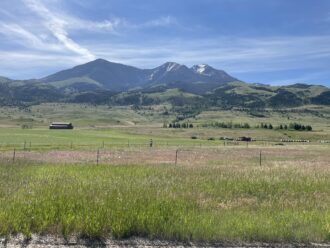Invasive annual grasses, such as cheatgrass and ventenata, are reducing the abundance of native grasses that livestock producers depend on in the semi-arid rangelands of southwestern Montana. At the current low-to-moderate levels of invasion, it’s crucial to begin targeted management before invasive populations become too advanced. To guide efforts to slow or halt annual grass expansion, producers have expressed a desire for new and affordable tools.
One potential tool is the patented micronutrient soil amendment Nutrafix, designed to improve soil health and perennial forage. Nutrafix may also reduce several weedy species. However, research on this capacity of Nutrafix is limited.
Montana State University graduate student Erin Teichroew’s project aims to improve understanding of how this soil amendment affects seed germination and establishment of native and non-native species, as well as its broader impact on forage quality and soil health.
“Producers are interested in learning more since many of them are already using this product,” says Teichroew. “But there hasn’t been much research to answer the question of how it works. It’s an interesting product because if it does what we think it’s doing, it will be beneficial to managing annual grasses and potentially improving the abundance of perennial grasses.”
Teichroew is assessing the impact of Nutrafix in a controlled environment on germination, seedling emergence of three native and two non-native grasses, and on biomass and forage quality of mature native grasses. A field study is assessing forage and soil quality in previously established plots (project number SW20-915) meant to assess the impact of Nutrafix on cheatgrass control. Studies in these previously established plots demonstrated control of cheatgrass, but why it was effective wasn’t clear. By including greenhouse and petri dish environments, this study will provide more depth about how the product causes the observed changes.
“I’m enjoying working in non-native plant management as the shift toward sustainable management tools that improve native vegetation is ramping up. I think it’s wonderful that this type of tool is already being adopted by the ranching community,” says Teichroew.
